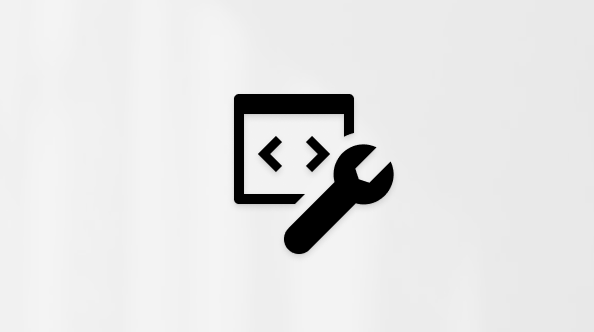Summary
This update resolves vulnerabilities in Adobe Flash Player when it's installed on all supported editions of Windows Server 2012, Windows 8.1, Windows Server 2012 R2, Windows RT 8.1, Windows 10, and Windows 10 Version 1511.
To learn more about the vulnerability, see Microsoft Security Bulletin MS16-083.
More Information
Important
-
All future security and nonsecurity updates for Windows RT 8.1, Windows 8.1, and Windows Server 2012 R2 require update 2919355 to be installed. We recommend that you install update 2919355 on your Windows RT 8.1-based, Windows 8.1-based, or Windows Server 2012 R2-based computer so that you receive future updates.
-
If you install a language pack after you install this update, you must reinstall this update. Therefore, we recommend that you install any language packs that you need before you install this update. For more information, see Add language packs to Windows.
-
This security update applies to the Windows operating systems that are listed in the "Applies to" section in this article. If you want to install Adobe Flash Player update for an earlier version of Windows, try Adobe Flash Player Download.
Known issues in this security update
-
Some Citrix XenApp and XenDesktop customers who use Flash Redirection have reported reliability issues after they apply this update.
To resolve this problem, install the December 2016 Security Monthly Quality Rollup for Windows 8.1 and Windows Server 2012 R2.
The third-party products that this article discusses are manufactured by companies that are independent of Microsoft. Microsoft makes no warranty, implied or otherwise, about the performance or reliability of these products.
How to obtain and install the update
Method 1: Windows Update
This update is available through Windows Update. When you turn on automatic updating, this update will be downloaded and installed automatically. For more information about how to turn on automatic updating, see
Get security updates automatically.
Note For Windows RT 8.1, this update is available through Windows Update only.
Method 2: Microsoft Download Center
You can obtain the stand-alone update package through the Microsoft Download Center. Follow the installation instructions on the download page to install the update.
Click the download link in Microsoft Security Bulletin MS16-083 that corresponds to the version of Windows that you are running.
More Information
Security CentralYou can manage the software and security updates that you have to deploy to the servers, desktops, and mobile systems in your organization. For more information, see the TechNet Update Management Center. The
Microsoft TechNet Security website provides more information about security in Microsoft products.
Security updates are available from
Microsoft Update and
Windows Update. Security updates are also available from the
Microsoft Download Center. You can find security updates most easily by doing a keyword search for "security update."
You can download security updates from the
Microsoft Update Catalog. The Microsoft Update Catalog provides a searchable catalog of content that is made available through Windows Update and Microsoft Update. This includes security updates, drivers, and service packs. For more information about the Microsoft Update Catalog, see the
Microsoft Update Catalog FAQ.
Detection and deployment guidanceMicrosoft provides detection and deployment guidance for security updates. This guidance contains recommendations and information that can help IT professionals understand how to use various tools for detection and deployment of security updates. For more information, see
Detection and deployment guidance for Microsoft security updates.
Microsoft Baseline Security AnalyzerMicrosoft Baseline Security Analyzer (MBSA) lets administrators scan local and remote systems for missing security updates and common security misconfigurations. For more information, see
Microsoft Baseline Security Analyzer.
Note Customers who use legacy software that is not supported by the latest release of MBSA, Microsoft Update, and Windows Server Update Services should see the "Legacy Product Support" section of
Microsoft Baseline Security Analyzer. Here they will find information about how to create comprehensive security update detection by using legacy tools.
Windows Server Update ServicesWindows Server Update Services (WSUS) lets information technology administrators deploy the latest Microsoft product updates to computers that are running Windows. For more information about how to deploy security updates by using Windows Server Update Services, see the following Microsoft TechNet article:
Windows Server Update Services
Systems Management ServerThe following table provides the Microsoft Systems Management Server (SMS) detection and deployment summary for this security update.
|
Software |
SMS 2003 with ITMU |
System Center Configuration Manager |
|---|---|---|
|
Windows 8.1 for 32-bit systems |
No |
Yes |
|
Windows 8.1 for 64-bit systems |
No |
Yes |
|
Windows Server 2012 and Windows Server 2012 R2 |
No |
Yes |
Note Microsoft discontinued support for SMS 2.0 on April 12, 2011. For SMS 2003, Microsoft also discontinued support for the Security Update Inventory Tool (SUIT) on April 12, 2011. Customers are encouraged to upgrade to
System Center Configuration Manager. For customers who remain on SMS 2003 Service Pack 3, the Inventory Tool for Microsoft Updates (ITMU) is also an option.
For SMS 2003, the SMS 2003 Inventory Tool for Microsoft Updates (ITMU) can be used by SMS to detect security updates that are offered by
Microsoft Update and that are supported by
Windows Server Update Services. For more information, see Systems Management Server 2003. For more information about SMS scanning tools, see
Systems Management Server 2003 Software Update Scanning Tools. See also Downloads for Systems Management Server 2003.
System Center Configuration Manager uses WSUS 3.0 for detection of updates. For more information, see
System Center.
For detailed information, see
Summary list of monthly detection and deployment guidance articles.
Update Compatibility Evaluator and Application Compatibility Toolkit
Updates frequently write to the same files and registry settings that are required for your applications to run. This can trigger incompatibilities and increase the time that is required to deploy security updates. You can streamline the testing and validating of Windows updates against installed applications by using the
Update Compatibility Evaluator components that are included in Application Compatibility Toolkit.
The Application Compatibility Toolkit (ACT) contains the necessary tools and documentation to evaluate and decrease application compatibility issues before you deploy Windows Vista, a Windows update, a Microsoft Security update, or a new version of Windows Internet Explorer in your environment.
Windows 8.1 (all editions)
Reference tableThe following table contains the security update information for this software. You can find more information in the "Deployment information" section.
|
Deployment |
Information |
|---|---|
|
For Adobe Flash Player in Internet Explorer 11 on all supported 32-bit editions of Windows 8.1: |
|
|
For Adobe Flash Player in Internet Explorer 11 on all supported x64-based editions of Windows 8.1: |
|
|
For Adobe Flash Player in Internet Explorer 11 on all supported 32-bit editions of Windows 8.1: |
|
|
For Adobe Flash Player in Internet Explorer 11 on all supported x64-based editions of Windows 8.1: |
|
|
More information |
See the "Detection and deployment tools and guidance" subsection. |
|
Restart requirement |
In some cases, this update does not require a restart. If the required files are being used, this update requires a restart. If this behavior occurs, you receive a message that advises you to restart. To help reduce the possibility that a restart will be required, you should stop all affected services and close all applications that may use the affected files before you install the security update. For more information about why you may be prompted to restart, see |
|
Hotpatching |
Not applicable |
|
Removal information |
To uninstall an update that was installed by WUSA, use the /Uninstall setup switch. Or, click Control Panel, click System and Security, click View installed updates under Windows Update, and then select from the list of updates. |
|
Registry key verification |
There is no registry key to validate the presence of this update. |
|
Inclusion in future service packs |
The update for this issue will be included in a future service pack or update rollup. |
Deployment information
Installing the updateWhen you install this security update, the installer checks whether one or more of the files that are being updated on your system have previously been updated by a Microsoft hotfix.
For more information about the terminology that appears in this Knowledge Base article, such as "hotfix," see
Description of the standard terminology that is used to describe Microsoft software updates.
This security update supports the following installation switches.
|
Switch |
Description |
|---|---|
|
/?, /h, /help |
Displays help about supported switches. |
|
/quiet |
Suppresses the display of status or error messages. |
|
/norestart |
When it is combined with /quiet, the system is not restarted after installation even if a restart is required to complete installation. |
|
/warnrestart:<seconds> |
When it is combined with /quiet, the installer warns the user before it begins the restart. |
|
/promptrestart |
When it is combined with /quiet, the installer prompts before it begins restart. |
|
/forcerestart |
When it is combined with /quiet, the installer forcibly closes applications and begins the restart. |
|
/log:<file name> |
Enables logging to the specified file. |
|
/extract:<destination> |
Extracts the package contents to the destination folder. |
|
/uninstall /kb:<KB number> |
Uninstalls the security update. |
Note For more information about the Wusa.exe installer, see the "Windows Update Stand-alone Installer" section in the TechNet article
Miscellaneous Changes in Windows 7.
Verifying that the update was appliedBecause there are several editions of Windows, the following steps may be different on your system. If they are different, see your product documentation to complete these steps.
Verifying the file version
-
Click Start, and then type an update file name in the Search box.
-
When the file appears under Programs, right-click the file name, and then click Properties.
-
On the General tab, compare the file size with the file information tables that are provided in this Microsoft Knowledge Base article.
Note Depending on the edition of the operating system or the programs that are installed on your system, some files that are listed in the file information table may not be installed. -
You can also click the Details tab and compare information, such as file version and date changed, with the file information tables that are provided in the Microsoft Knowledge Base article.
Note Attributes other than the file version may change during installation. Comparing other file attributes to the information in the file information table is not a supported method of verifying that the update was applied. Also, in certain cases, files are renamed during installation. If the file or version information does not exist, use one of the other available methods to verify update installation. -
Finally, you can also click the Previous Versions tab and compare file information for the earlier version of the file together with the file information for the new, or updated, version of the file.
Windows Server 2012 and Windows Server 2012 R2 (all editions)
Reference tableThe following table contains the security update information for this software. You can find more information in the "Deployment information" subsection in this section.
|
Deployment |
Information |
|---|---|
|
Installing without requiring user intervention |
For Adobe Flash Player in Internet Explorer 10 on all supported editions of Windows Server 2012: |
|
For Adobe Flash Player in Internet Explorer 11 on all supported editions of Windows Server 2012 R2: |
|
|
Installing without restarting |
For Adobe Flash Player in Internet Explorer 10 on all supported editions of Windows Server 2012: |
|
For Adobe Flash Player in Internet Explorer 11 on all supported editions of Windows Server 2012 R2: |
|
|
More information |
See the "Detection and deployment tools and Guidance" subsection. |
|
Restart requirement |
In some cases, this update does not require a restart. If the required files are being used, this update requires a restart. If this behavior occurs, you receive a message that advises you to restart. To help reduce the possibility that a restart will be required, you should stop all affected services and close all applications that may use the affected files before you install the security update. For more information about why you may be prompted to restart, see |
|
Hotpatching |
Not applicable |
|
Removal information |
To uninstall an update that was installed by WUSA, use the /Uninstall setup switch. Or, click Control Panel, click System and Security, click View installed updates under Windows Update, and then select from the list of updates. |
|
Registry key verification |
|
|
Inclusion in future service packs |
The update for this issue will be included in a future service pack or update rollup. |
Deployment information
Installing the updateWhen you install this security update, the installer checks whether one or more of the files that are being updated on your system were previously updated by a Microsoft hotfix.
For more information about the terminology that appears in this Knowledge Base article, such as "hotfix," see
Description of the standard terminology that is used to describe Microsoft software updates.
This security update supports the following installation switches.
|
Switch |
Description |
|---|---|
|
/?, /h, /help |
Displays help about supported switches. |
|
/quiet |
Suppresses the display of status or error messages. |
|
/norestart |
When it is combined with/quiet, the system does not restart after the installation even if a restart is required to complete installation. |
|
/warnrestart:<seconds> |
When it is combined with /quiet, the installer warns the user before it begins the restart. |
|
/promptrestart |
When it is combined with /quiet, the installer prompts the user before it begins the restart. |
|
/forcerestart |
When it is combined with /quiet, the installer forcibly closes applications and begins the restart. |
|
/log:<file name> |
Enables logging to the specified file. |
|
/extract:<destination> |
Extracts the package contents to the destination folder. |
|
/uninstall /kb:<KB number> |
Uninstalls the security update. |
Note For more information about the Wusa.exe installer, see "Windows Update Stand-alone Installer" in the following Microsoft TechNet article:
Miscellaneous Changes in Windows 7
Verifying that the update was appliedBecause there are several editions of Windows, the following steps may be different in your system. If they are different, see your product documentation to complete these steps.
Verifying the file version
-
Click Start, and then type an update file name in the Start Search box.
-
When the file appears under Programs, right-click the file name, and then click Properties.
-
On the General tab, compare the file size with the file information tables that are provided in the Knowledge Base article.
Note Depending on the edition of the operating system or the programs that are installed in your system, some files that are listed in the file information table may not be installed. -
You can also click the Details tab to compare information, such as file version and date changed, with the file information tables that are provided in the Knowledge Base article.
Note Attributes other than the file version may change during installation. Comparing other file attributes to the information in the file information table is not a supported method of verifying that the update was applied. Also, in certain cases, files may be renamed during installation. If the file or version information does not exist, use one of the other available methods to verify update installation. -
Finally, you can also click the Previous Versions tab, and then compare file information for the earlier version of the file with the file information for the new or updated version of the file.
Help for installing updates: Support for Microsoft Update
Security solutions for IT professionals: TechNet Security Troubleshooting and Support
Help for protecting your Windows-based computer from viruses and malware: Virus Solution and Security Center
Local support according to your country: International Support
File Information
|
File name |
SHA1 hash |
SHA256 hash |
|---|---|---|
|
Windows10.0-KB3167685-x86.msu (Version 1511) |
609A0B793594D97CDE7EACEB274250636070F210 |
71618B0E97AD1029541CEE0D643852F701645EBBFA185B4BD8C44E1C7D004998 |
|
Windows10.0-KB3167685-x64.msu (Version 1511) |
00EC6619A16EF067A980133952BDA888A8331208 |
8B7D26188E76049598A97EDD3F345E5D4C716DF7BD6EEB136797C95E3CB71D4D |
|
Windows10.0-KB3167685-x86.msu |
E804CD8DB0FEEDB5423AABAC82740E00F4F03A4C |
3E5C3995ACA120DD0798B4DBE5F92DED0E57116E1C79009DCEC4D5B7C5F44F4C |
|
Windows10.0-KB3167685-x64.msu |
7C5968A5A3AAF31BD181EAA0E09B9CD674F3AE00 |
AA7E75FDC2524E7D2A59F0FA890A13EBCFEABF30621FAE323C735C1A90C680D7 |
|
Windows8.1-KB3167685-x86.msu |
8805ACBA6171B9D2FCB5A58B69BA1DB19736BB71 |
51FA8ECFE2F046786727ADD7CC35DAC12F06A15609453A5BB9A81A0F1BCC78A5 |
|
Windows8.1-KB3167685-x64.msu |
A5920A1C6F5C517496DA8B9BD4537A86BCCFDCB8 |
61DF24865DAAD72CDAAF65B703A822A8DD18BD1C9C574124243CFB831C3A0B7F |
|
Windows8.1-KB3167685-arm.msu |
851526A9FD97E9872653EE6E391CE50FB893BA29 |
D13157408ABC79F6AA1F26DB73DA6EF0EA026F2B257276BBB32B12F22CAC0642 |
|
Windows8-RT-KB3167685-x64.msu |
F0586BB1C91C768DA6C0C731DE706DB58D37EF5E |
AD123A373B426C354392D759094025D6C03B00FD90685E8D0262C89107494057 |
The English (United States) version of this security update installs files that have the attributes that are listed in the following tables.
Windows 8.1, Windows RT 8.1 and Windows Server 2012 R2 file information
For all supported x86-based versions
|
File name |
File version |
File size |
Date |
Time |
Platform |
|---|---|---|---|---|---|
|
Activex.vch |
Not applicable |
726,314 |
14-Jun-2016 |
17:13 |
Not applicable |
|
Flash.ocx |
22.0.0.192 |
21,593,080 |
14-Jun-2016 |
17:13 |
x86 |
|
Flashplayerapp.exe |
22.0.0.192 |
828,408 |
14-Jun-2016 |
17:13 |
x86 |
|
Flashplayercplapp.cpl |
22.0.0.192 |
176,632 |
14-Jun-2016 |
17:13 |
Not applicable |
|
Flashutil_activex.dll |
22.0.0.192 |
605,176 |
14-Jun-2016 |
17:13 |
x86 |
|
Flashutil_activex.exe |
22.0.0.192 |
1,272,824 |
14-Jun-2016 |
17:13 |
x86 |
For all supported ARM-based versions
|
File name |
File version |
File size |
Date |
Time |
Platform |
|---|---|---|---|---|---|
|
Flash.ocx |
22.0.0.192 |
18,610,680 |
14-Jun-2016 |
17:13 |
Not applicable |
|
Flashplayerapp.exe |
22.0.0.192 |
809,464 |
14-Jun-2016 |
17:13 |
Not applicable |
|
Flashplayercplapp.cpl |
22.0.0.192 |
162,296 |
14-Jun-2016 |
17:13 |
Not applicable |
|
Flashutil_activex.dll |
22.0.0.192 |
536,568 |
14-Jun-2016 |
17:13 |
Not applicable |
|
Flashutil_activex.exe |
22.0.0.192 |
787,448 |
14-Jun-2016 |
17:13 |
Not applicable |
For all supported x64-based versions
|
File name |
File version |
File size |
Date |
Time |
Platform |
|---|---|---|---|---|---|
|
Activex.vch |
Not applicable |
159,170 |
14-Jun-2016 |
17:13 |
Not applicable |
|
Flash.ocx |
22.0.0.192 |
27,981,304 |
14-Jun-2016 |
17:13 |
x64 |
|
Flashutil_activex.dll |
22.0.0.192 |
687,608 |
14-Jun-2016 |
17:13 |
x64 |
|
Flashutil_activex.exe |
22.0.0.192 |
915,448 |
14-Jun-2016 |
17:13 |
x64 |
|
Activex.vch |
Not applicable |
726,314 |
14-Jun-2016 |
17:13 |
Not applicable |
|
Flash.ocx |
22.0.0.192 |
21,593,080 |
14-Jun-2016 |
17:13 |
x86 |
|
Flashplayerapp.exe |
22.0.0.192 |
828,408 |
14-Jun-2016 |
17:13 |
x86 |
|
Flashplayercplapp.cpl |
22.0.0.192 |
176,632 |
14-Jun-2016 |
17:13 |
Not applicable |
|
Flashutil_activex.dll |
22.0.0.192 |
605,176 |
14-Jun-2016 |
17:13 |
x86 |
|
Flashutil_activex.exe |
22.0.0.192 |
1,272,824 |
14-Jun-2016 |
17:13 |
x86 |
Windows 10 (version 1511) file information
For all supported x86-based versions
|
File name |
File version |
File size |
Date |
Time |
Platform |
|---|---|---|---|---|---|
|
Activex.vch |
Not applicable |
726,314 |
14-Jun-2016 |
18:33 |
Not applicable |
|
Flash.ocx |
22.0.0.192 |
21,593,080 |
14-Jun-2016 |
18:33 |
x86 |
|
Flashplayerapp.exe |
22.0.0.192 |
828,408 |
14-Jun-2016 |
18:33 |
x86 |
|
Flashplayercplapp.cpl |
22.0.0.192 |
176,632 |
14-Jun-2016 |
18:33 |
Not applicable |
|
Flashutil_activex.dll |
22.0.0.192 |
605,176 |
14-Jun-2016 |
18:33 |
x86 |
|
Flashutil_activex.exe |
22.0.0.192 |
1,272,824 |
14-Jun-2016 |
18:33 |
x86 |
For all supported x64-based versions
|
File name |
File version |
File size |
Date |
Time |
Platform |
|---|---|---|---|---|---|
|
Activex.vch |
Not applicable |
159,170 |
14-Jun-2016 |
18:33 |
Not applicable |
|
Flash.ocx |
22.0.0.192 |
27,981,304 |
14-Jun-2016 |
18:33 |
x64 |
|
Flashutil_activex.dll |
22.0.0.192 |
687,608 |
14-Jun-2016 |
18:33 |
x64 |
|
Flashutil_activex.exe |
22.0.0.192 |
915,448 |
14-Jun-2016 |
18:33 |
x64 |
|
Activex.vch |
Not applicable |
726,314 |
14-Jun-2016 |
18:33 |
Not applicable |
|
Flash.ocx |
22.0.0.192 |
21,593,080 |
14-Jun-2016 |
18:33 |
x86 |
|
Flashplayerapp.exe |
22.0.0.192 |
828,408 |
14-Jun-2016 |
18:33 |
x86 |
|
Flashplayercplapp.cpl |
22.0.0.192 |
176,632 |
14-Jun-2016 |
18:33 |
Not applicable |
|
Flashutil_activex.dll |
22.0.0.192 |
605,176 |
14-Jun-2016 |
18:33 |
x86 |
|
Flashutil_activex.exe |
22.0.0.192 |
1,272,824 |
14-Jun-2016 |
18:33 |
x86 |
Windows 10 file information
For all supported x64-based versions
|
File name |
File version |
File size |
Date |
Time |
Platform |
|---|---|---|---|---|---|
|
Activex.vch |
Not applicable |
159,170 |
14-Jun-2016 |
17:32 |
Not applicable |
|
Flash.ocx |
22.0.0.192 |
27,981,304 |
14-Jun-2016 |
17:32 |
x64 |
|
Flashutil_activex.dll |
22.0.0.192 |
687,608 |
14-Jun-2016 |
17:32 |
x64 |
|
Flashutil_activex.exe |
22.0.0.192 |
915,448 |
14-Jun-2016 |
17:32 |
x64 |
|
Activex.vch |
Not applicable |
726,314 |
14-Jun-2016 |
17:32 |
Not applicable |
|
Flash.ocx |
22.0.0.192 |
21,593,080 |
14-Jun-2016 |
17:32 |
x86 |
|
Flashplayerapp.exe |
22.0.0.192 |
828,408 |
14-Jun-2016 |
17:32 |
x86 |
|
Flashplayercplapp.cpl |
22.0.0.192 |
176,632 |
14-Jun-2016 |
17:32 |
Not applicable |
|
Flashutil_activex.dll |
22.0.0.192 |
605,176 |
14-Jun-2016 |
17:32 |
x86 |
|
Flashutil_activex.exe |
22.0.0.192 |
1,272,824 |
14-Jun-2016 |
17:32 |
x86 |
For all supported x86-based versions
|
File name |
File version |
File size |
Date |
Time |
Platform |
|---|---|---|---|---|---|
|
Activex.vch |
Not applicable |
726,314 |
14-Jun-2016 |
17:32 |
Not applicable |
|
Flash.ocx |
22.0.0.192 |
21,593,080 |
14-Jun-2016 |
17:32 |
x86 |
|
Flashplayerapp.exe |
22.0.0.192 |
828,408 |
14-Jun-2016 |
17:32 |
x86 |
|
Flashplayercplapp.cpl |
22.0.0.192 |
176,632 |
14-Jun-2016 |
17:32 |
Not applicable |
|
Flashutil_activex.dll |
22.0.0.192 |
605,176 |
14-Jun-2016 |
17:32 |
x86 |
|
Flashutil_activex.exe |
22.0.0.192 |
1,272,824 |
14-Jun-2016 |
17:32 |
x86 |
Windows Server 2012 file information
For all supported x64-based versions
|
File name |
File version |
File size |
Date |
Time |
Platform |
|---|---|---|---|---|---|
|
Activex.vch |
Not applicable |
159,170 |
14-Jun-2016 |
17:29 |
Not applicable |
|
Flash.ocx |
22.0.0.192 |
27,980,768 |
14-Jun-2016 |
17:29 |
x64 |
|
Flashutil_activex.dll |
22.0.0.192 |
687,072 |
14-Jun-2016 |
17:29 |
x64 |
|
Flashutil_activex.exe |
22.0.0.192 |
914,912 |
14-Jun-2016 |
17:29 |
x64 |
|
Activex.vch |
Not applicable |
726,314 |
14-Jun-2016 |
17:29 |
Not applicable |
|
Flash.ocx |
22.0.0.192 |
21,592,544 |
14-Jun-2016 |
17:29 |
x86 |
|
Flashplayerapp.exe |
22.0.0.192 |
827,872 |
14-Jun-2016 |
17:29 |
x86 |
|
Flashplayercplapp.cpl |
22.0.0.192 |
176,096 |
14-Jun-2016 |
17:29 |
Not applicable |
|
Flashutil_activex.dll |
22.0.0.192 |
604,640 |
14-Jun-2016 |
17:29 |
x86 |
|
Flashutil_activex.exe |
22.0.0.192 |
1,272,288 |
14-Jun-2016 |
17:29 |
x86 |










